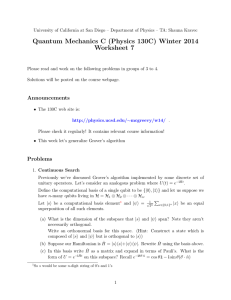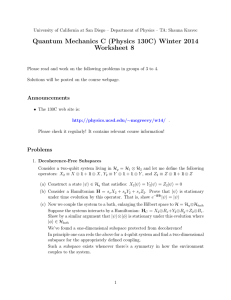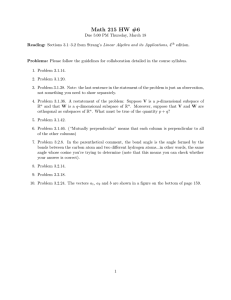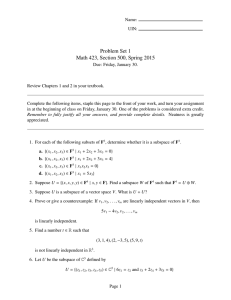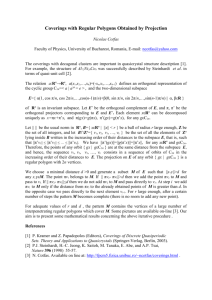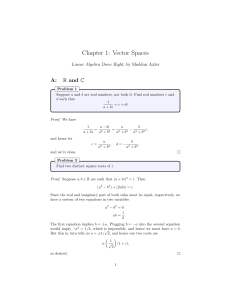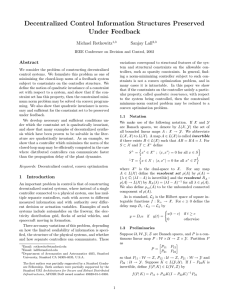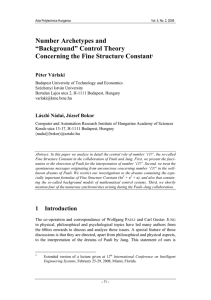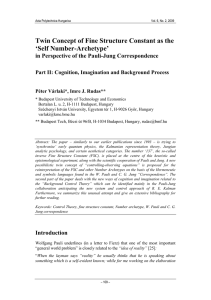Quantum Mechanics C (Physics 130C) Winter 2015 Worksheet 7 Announcements
advertisement
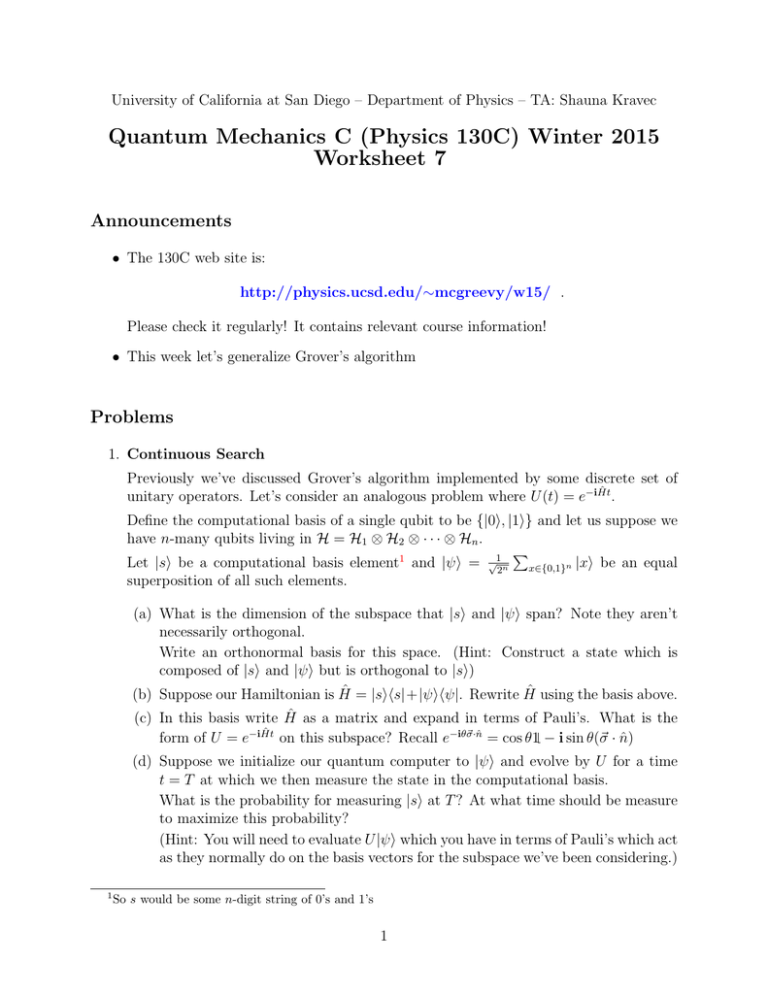
University of California at San Diego – Department of Physics – TA: Shauna Kravec
Quantum Mechanics C (Physics 130C) Winter 2015
Worksheet 7
Announcements
• The 130C web site is:
http://physics.ucsd.edu/∼mcgreevy/w15/ .
Please check it regularly! It contains relevant course information!
• This week let’s generalize Grover’s algorithm
Problems
1. Continuous Search
Previously we’ve discussed Grover’s algorithm implemented by some discrete set of
unitary operators. Let’s consider an analogous problem where U (t) = e−iĤt .
Define the computational basis of a single qubit to be {|0i, |1i} and let us suppose we
have n-many qubits living in H = H1 ⊗ H2 ⊗ · · · ⊗ Hn .
P
Let |si be a computational basis element1 and |ψi = √12n x∈{0,1}n |xi be an equal
superposition of all such elements.
(a) What is the dimension of the subspace that |si and |ψi span? Note they aren’t
necessarily orthogonal.
Write an orthonormal basis for this space. (Hint: Construct a state which is
composed of |si and |ψi but is orthogonal to |si)
(b) Suppose our Hamiltonian is Ĥ = |sihs|+|ψihψ|. Rewrite Ĥ using the basis above.
(c) In this basis write Ĥ as a matrix and expand in terms of Pauli’s. What is the
form of U = e−iĤt on this subspace? Recall e−iθ~σ·n̂ = cos θ1 − i sin θ(~σ · n̂)
(d) Suppose we initialize our quantum computer to |ψi and evolve by U for a time
t = T at which we then measure the state in the computational basis.
What is the probability for measuring |si at T ? At what time should be measure
to maximize this probability?
(Hint: You will need to evaluate U |ψi which you have in terms of Pauli’s which act
as they normally do on the basis vectors for the subspace we’ve been considering.)
1
So s would be some n-digit string of 0’s and 1’s
1
